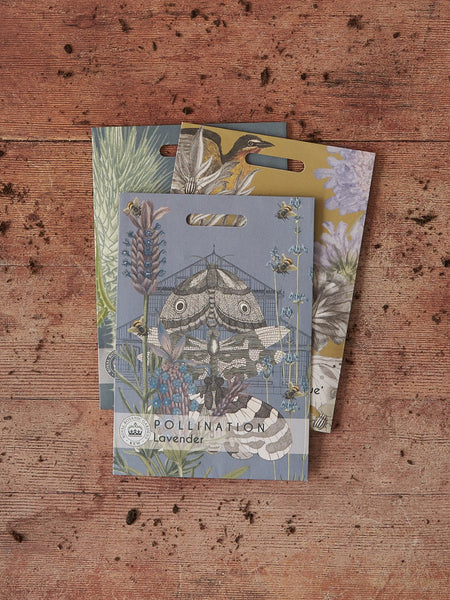Kew Pollination Collection Lavender 'Munstead' Seeds
£3.99 £2.00
- Sow from February to July
- Height: 45cm. Spread: 60cm
- 1 packet contains approximately 110 seeds
- A magnet for bees and other pollinators
- Make delicious lavender sugar or lavender and mint jelly from the freshly picked flowers
I aim to pick and pack your order within 24 hours of receipt and you should expect your parcel to arrive within 3–5 working days under normal circumstances. Orders placed on a Friday may not be sent until the following Monday. All delivery charges are calculated and displayed at the checkout.
- If your order can safely be sent in an envelope or small parcel, it will be sent by Royal Mail via a tracked service for £3.50. This doesn't require a signature but does let you know where your parcel is.
- Larger orders will be sent either with Royal Mail or a premium courier service for £4.95. Tracking details will be sent via SMS and/or email, if these contacts are provided.
- Extra large or heavy items will be sent via a premium courier service with tracking provided. Delivery is normally the next working day after dispatch.
- For deliveries to Northern Ireland, the Isle of Man, Channel Islands and international addresses, please drop me a line at atyourservice@dancoopergarden.com letting me know where you are in the world and what you'd like to purchase. I will check the items are allowed to be shipped to your location and get a cost for your approval.
Should you need to return an item, drop me a line at atyourservice@dancoopergarden.com within 14 days of receiving your purchase, providing your name, order number and the reason for your return. I will let you know how to return your item.
Please visit my Delivery & Returns page for more detailed information.
Sow lavender seeds from February to July on the surface of moist seed compost and cover seeds with a sprinkling of vermiculite or finely sieved compost. Place the seed tray in a propagator at 21-25°C or seal inside a clear polythene bag until germination. This can take up to 21 days. Keep the compost damp but not wet and do not exclude light as this helps germination.
When seedlings are large enough to handle, transplant into 7.5cm pots and grow lavender plants on in cooler conditions. When all risk of frost has passed, gradually acclimatise to outdoor conditions over 7 – 10 days before planting outdoors. Plant lavenders on any light, well-drained soil in full sun. Alternatively, grow English lavender in patio containers using soil-based compost such as John Innes No.3. Lavenders dislike wet ground, particularly during winter. Improve heavy soil conditions by adding coarse grit or sharp sand prior to planting. Overwinter late summer sowings in a cold frame and plant out the following spring.
Water regularly throughout summer until lavender plants are fully established. Once established, they are reasonably drought tolerant. Immediately after flowering, prune English lavender back to within 2cm of the previous year's growth to maintain a compact, well-shaped plant. If left unpruned, lavender can quickly become woody and unattractive. It's sensible to assume plants will need replacing every 3-5 years.
For more help and advice on growing plants from seed, read my handy guide.
Allergens
A great many of our favourite garden plants can be harmful if eaten or handled without gloves. This is rarely a cause for concern but it's always good to know what you are dealing with.
Lavender is well known for its soothing properties but it can cause skin sensitivity in some people. If in doubt, wear gloves when handling.







